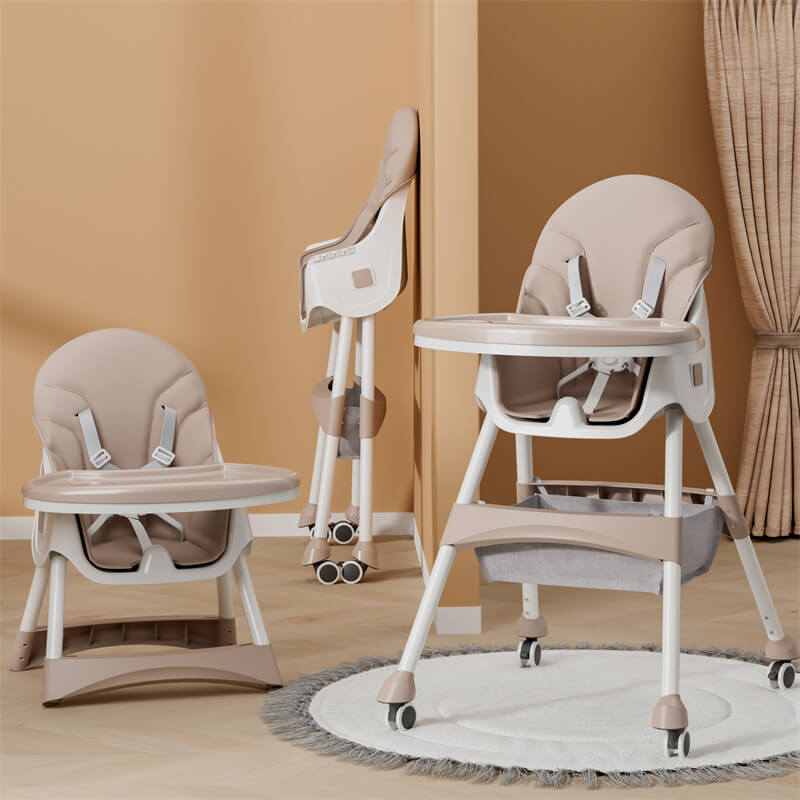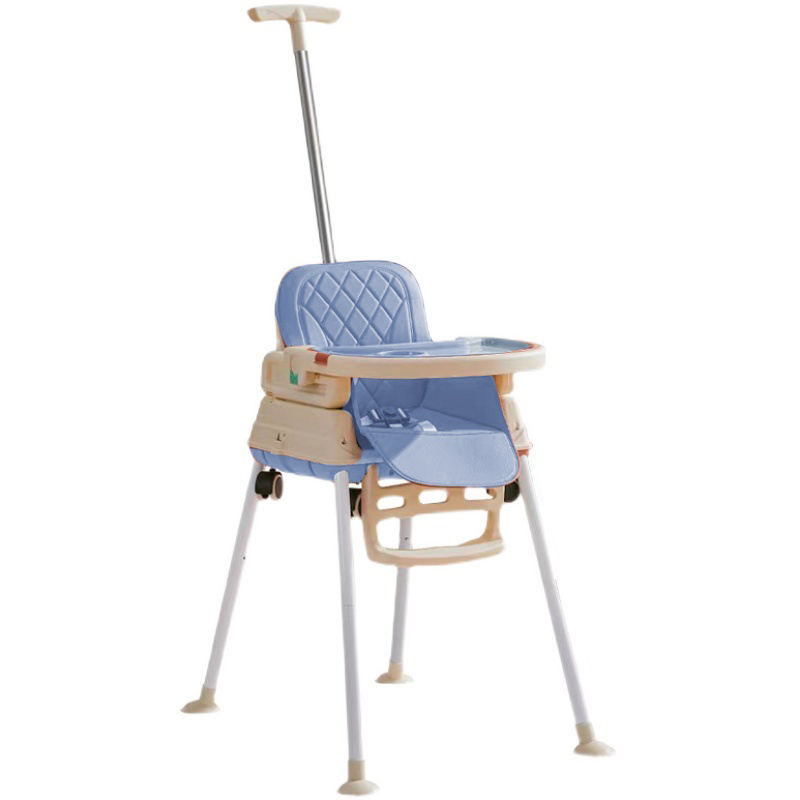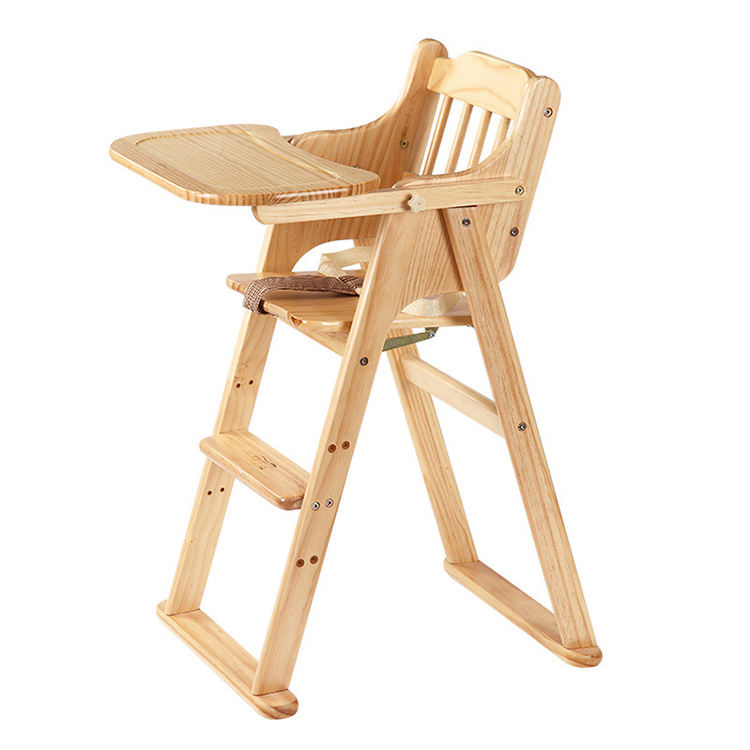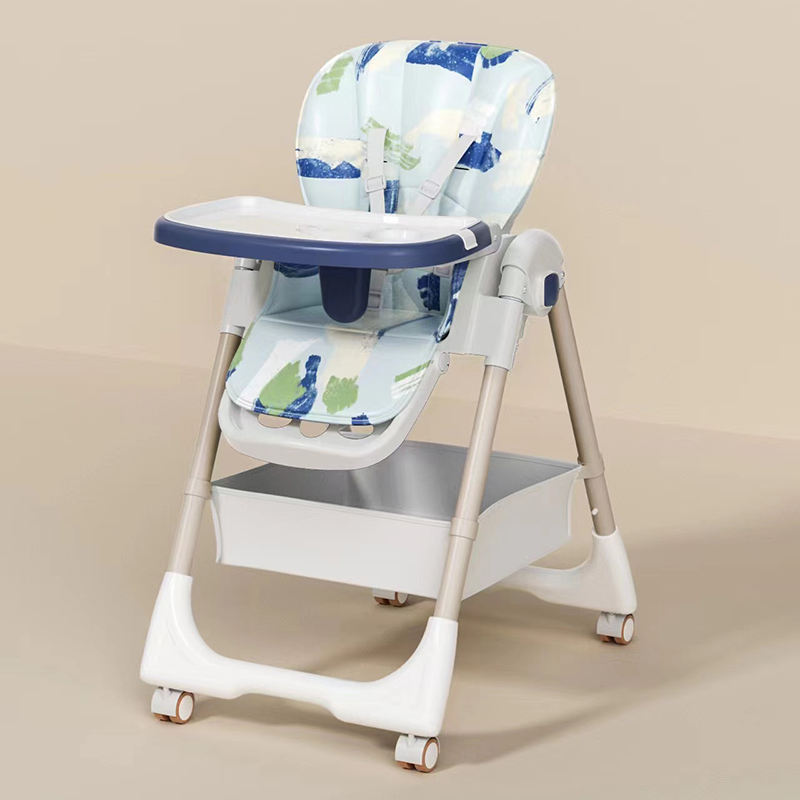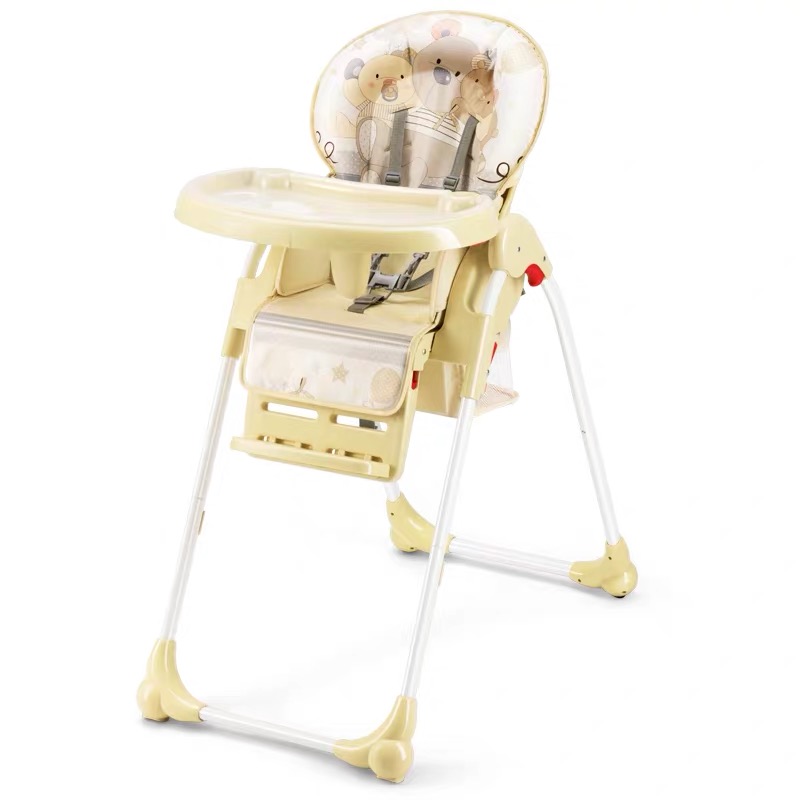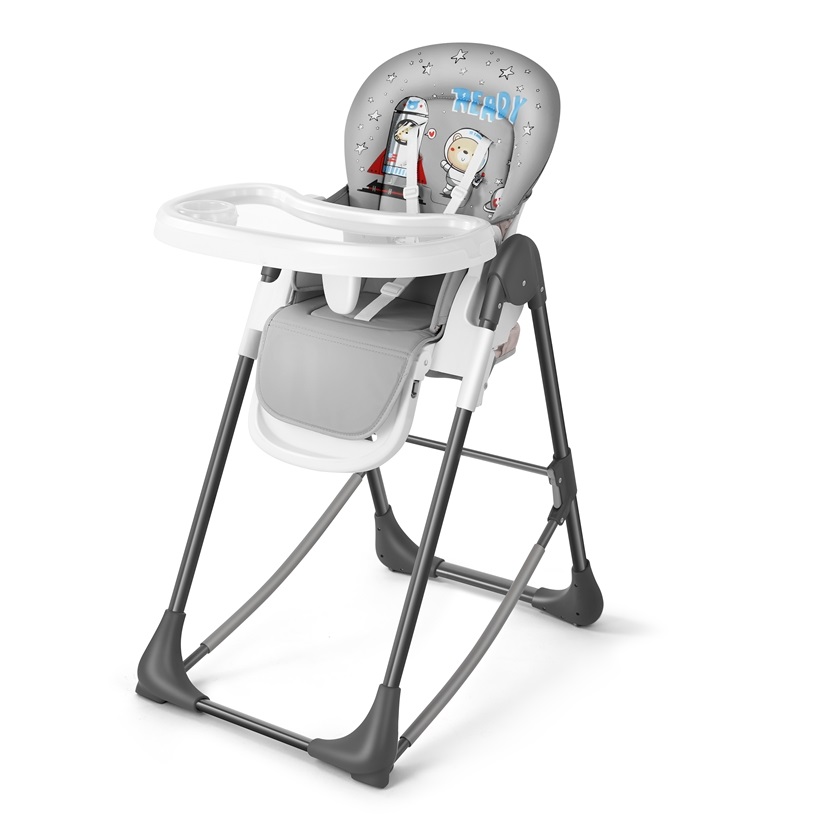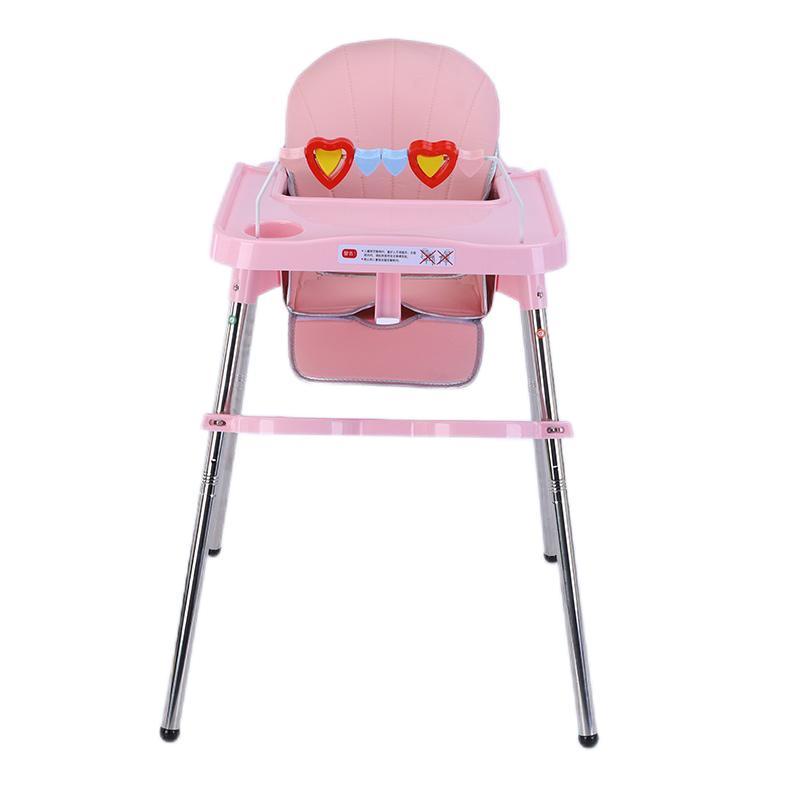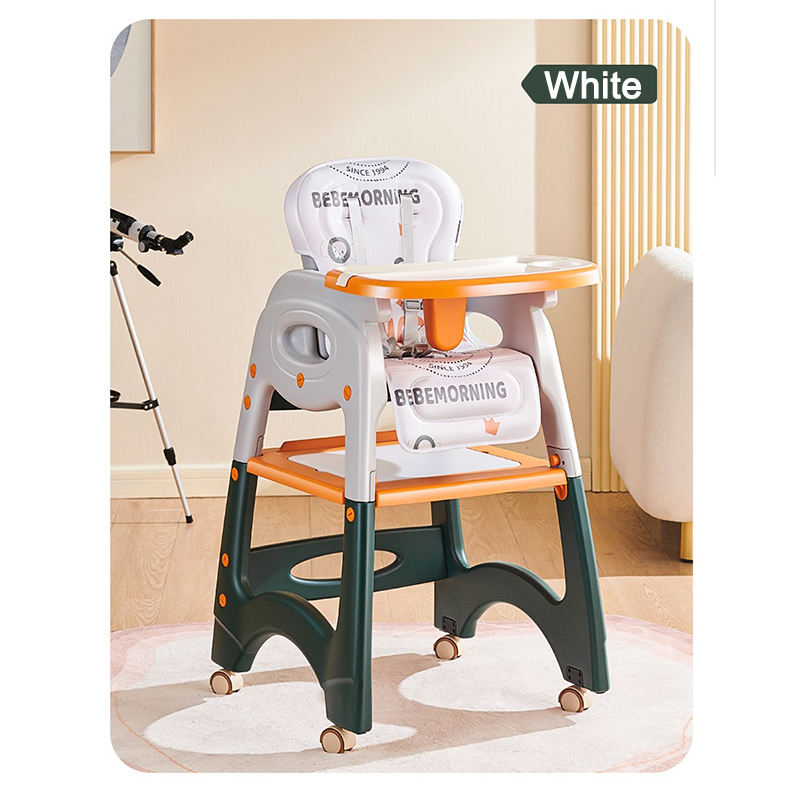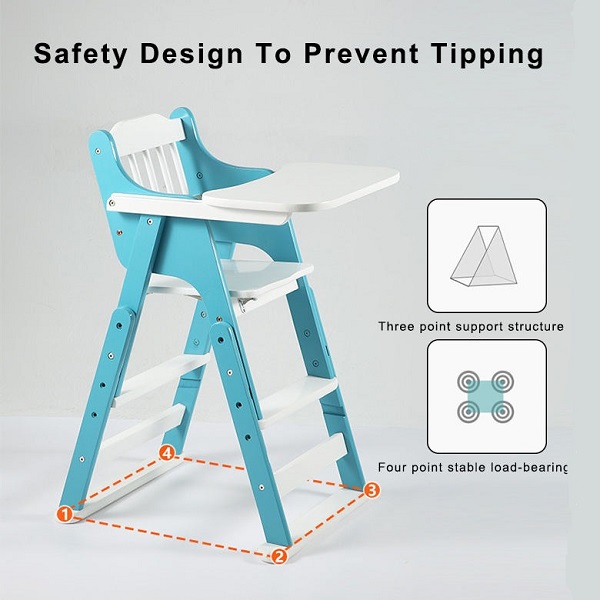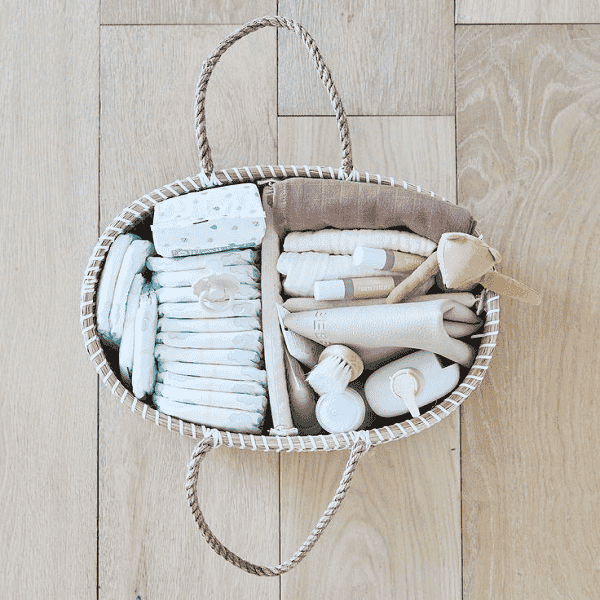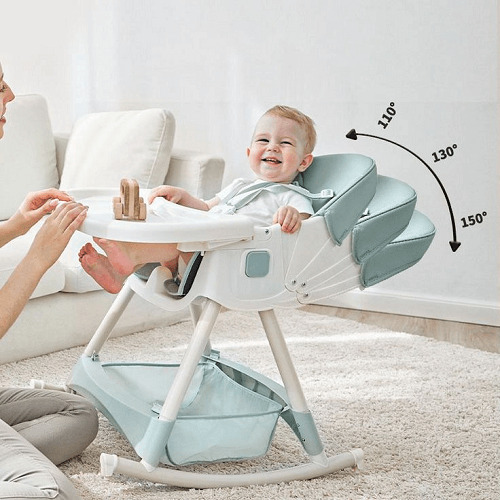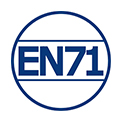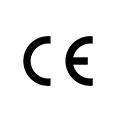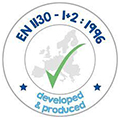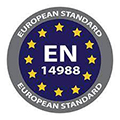High chairs are an essential piece of furniture for parents and caregivers, providing a safe and convenient space for infants and toddlers to eat. As a retailer, offering high chairs in your store can be a lucrative business opportunity. However, finding the right high chair manufacturersThe chair has wheels at the bottom for easy movement. can be a challenging task. In this comprehensive guide, we will explore the different types of high chairs, factors to consider when choosing suppliers, safety standards, identifying reputable manufacturers, and keeping inventory current.
Types of High Chairs
Convertible High Chairs
- Features: Adjustable seating configurations, multiple recline positions, height adjustments.
- Advantages: Versatility, longevity, suitable for different stages of a child’s growth.
- Disadvantages: Higher initial cost due to multifunctionality.
- Target Consumer Groups: Growing families, childcare facilities, and restaurants.
Vintage Wooden High Chairs
- Features: Sleek wooden design, adjustable seating options, removable trays.
- Advantages: Aesthetic appeal, durability, and easy maintenance.
- Disadvantages: Higher initial cost, may require more maintenance.
- Target Consumer Groups: Design-conscious parents, upscale childcare centers, and boutique stores.
Folding High Chairs
- Features: Lightweight, portable design, foldable frame, easy storage.
- Advantages: Space-saving, ideal for smaller living spaces or travel.
- Disadvantages: Limited adjustability, may not be as sturdy.
- Target Consumer Groups: Urban dwellers, frequent travelers, and families dining out.
Travel High Chairs
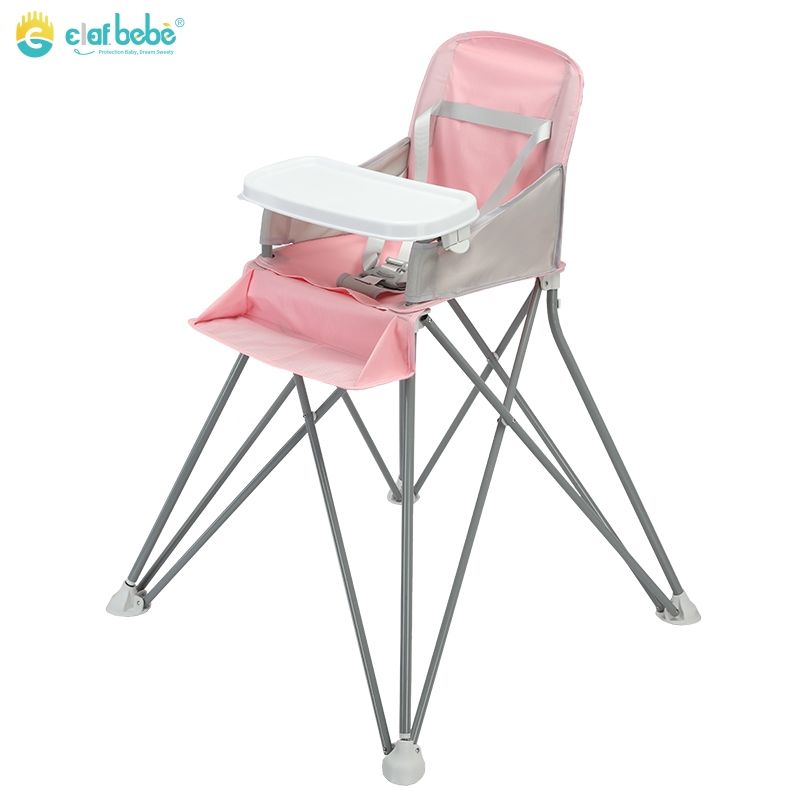
- Features: Compact and lightweight design, often with a foldable frame and carrying bag for easy transport, may attach directly to tables or chairs.
- Advantages: Ideal for travel and dining out, space-saving, convenient for on-the-go feeding.
- Disadvantages: Limited features and adjustability compared to standard high chairs.
- Target Consumer Groups: Families who travel frequently, outdoor enthusiasts, parents seeking a portable feeding solution.
Adjustable High Chairs
- Features: High chairs with adjustable seat heights to accommodate different table heights or growing children.
- Advantages: Versatility, suitable for use with various dining tables, grows with the child.
- Disadvantages: May have a higher price point, additional mechanisms may require maintenance.
- Target Consumer Groups: Families with varying table heights, parents seeking long-term usability in a high chair.
Portable High Chair
- Features: Simple design, made of lightweight materials, with one-click folding mechanism. The chair is equipped with wheels at the base for effortless mobility.
- Advantages: Easy to carry around and effortless to carry.
- Cons: Limited features and adjustability compared to standard high chairs.
- Target consumer group: Suitable for families who often take their babies out.
Modern High Chair
- Features: Sleek and contemporary design, often made with modern materials such as plastic or metal, may incorporate innovative features like adjustable trays or height positions.
- Advantages: Stylish appearance, functionality, may offer advanced safety features and ease of cleaning.
- Disadvantages: Higher price point compared to some traditional high chairs, may prioritize style over simplicity.
- Target Consumer Groups: Design-conscious parents, those seeking a high chair that complements modern home decor, upscale childcare centers.
Small High Chair
- Features: Compact design suitable for smaller spaces, may have a minimalist frame with basic features like a safety belt and removable tray.
- Advantages: Space-saving, ideal for apartments or kitchens with limited space, may be more affordable.
- Disadvantages: Limited features and adjustability, may not accommodate larger children as they grow.
- Target Consumer Groups: Urban dwellers, parents living in small apartments or condos, families with limited dining space.
4-in-1 High Chair
- Features: Versatile design that converts into multiple seating configurations, such as a high chair, booster seat, toddler chair, and youth chair.
- Advantages: Long-term usability, grows with the child, offers value for money by serving multiple purposes.
- Disadvantages: May have a higher initial cost due to multifunctionality, may be bulkier than single-purpose high chairs.
- Target Consumer Groups: Growing families, parents seeking long-term investment in a high chair, those looking for versatility in their baby gear.
Factors to Consider When Choosing High Chair Suppliers
When selecting suppliers, several crucial factors must be taken into account to ensure a smooth and successful partnership. Below are some important factors to consider:
Quality and Safety Standards: Prioritize suppliers that adhere to strict quality control measures and safety standards.
Product Variety and Range: Look for suppliers that offer a diverse range of high chair options to cater to different consumer preferences and market segments.
Pricing and Payment Terms: Evaluate the supplier’s pricing structure and payment terms to ensure they align with your budget and financial objectives.
Manufacturing Capabilities and Capacity: Assess the supplier’s manufacturing capabilities and production capacity to ensure they can fulfill your order requirements promptly. Consider factors such as lead times, production volume, and ability to scale production as needed.
Reputation and Reliability: Research the supplier’s reputation in the industry, including their track record of reliability, customer satisfaction, and ethical business practices.
Distribution and Logistics: Consider the supplier’s distribution network and logistics capabilities, ensure they can efficiently manage the transportation and delivery of high chairs to your retail outlets or distribution centers.
Customization Options: If you require customized high chairs or branding options, inquire about the supplier’s capabilities for product customization, such as color options, logo imprinting, or special packaging.
Support Services: A responsive and reliable supplier can help address any issues or concerns that may arise during the ordering process or after product delivery.
Understanding Safety Standards for High Chairs
Understanding safety standards for high chairs is crucial for ensuring the well-being of infants and young children. Here are key aspects to consider:
- Regulatory Compliance
Familiarize yourself with relevant safety standards and regulations governing high chairs in your region or market. These standards are typically established by government agencies or industry organizations to ensure product safety and quality.
- ASTM International Standards
The American Society for Testing and Materials (ASTM) sets voluntary safety standards for various consumer products, including high chairs.
- JPMA Certification
The Juvenile Products Manufacturers Association (JPMA) offers a certification program for juvenile products, including high chairs.
- Safety Features
Assess the safety features incorporated into high chair designs, such as secure harness systems, stable base construction, and durable materials. Look for high chairs with adjustable harness straps, crotch posts, and restraint systems to prevent children from slipping or climbing out of the chair.
- Stability and Structural Integrity
High chairs should be stable and sturdy to prevent tipping or collapsing during use. Check for features such as wide, non-skid bases, reinforced frames, and locking mechanisms.
- Product Recalls and Safety Alerts
Stay informed about product recalls and safety alerts related to high chairs by regularly checking relevant government websites, consumer advocacy organizations, and manufacturer notifications. Take prompt action if a high chair you own or sell is subject to a recall to prevent potential safety hazards.
Identifying Reputable High Chair Manufacturers
Look for high chair manufacturers with a long-standing reputation for excellence in the juvenile products industry. Research their history, years of operation, and track record of delivering high-quality products. Established manufacturers with a positive reputation are more likely to prioritize product safety and customer satisfaction. Look for manufacturers with state-of-the-art production facilities, advanced equipment, and rigorous quality control measures in place to ensure consistency and reliability in product manufacturing.
Reputable manufacturers conduct thorough testing of their products to verify compliance with safety standards and ensure optimal performance and durability. Look for manufacturers that employ certified testing laboratories and adhere to comprehensive testing protocols.
Evaluate the manufacturer’s product portfolio and innovation capabilities to assess their ability to meet market demand and deliver innovative solutions. Look for manufacturers that offer a diverse range of high-quality high chairs with innovative features and designs that cater to consumer preferences and trends.
Keeping Your High Chair Inventory Current
Keeping your high chair inventory current is essential to meeting customer demand, staying competitive in the market, and maximizing profitability. Here are some strategies to help you manage and update your high chair inventory effectively:
Monitor Sales Trends: Regularly analyze sales data and trends to identify which high chair models are performing well and which ones may be lagging behind. Pay attention to factors such as seasonality, consumer preferences, and emerging trends in baby products.
Conduct Regular Inventory Audits: Schedule regular inventory audits to assess the status of your high chair inventory. Identify slow-moving or obsolete inventory items that may need to be discounted or discontinued to free up space and capital for more profitable products.
Stay Informed About Product Releases: Stay informed about new high chair releases, product updates, and industry developments by monitoring manufacturer announcements, trade publications, and industry news sources. Be proactive in adding new products to your inventory to meet customer demand for the latest innovations.
Offer Seasonal Promotions and Discounts: Utilize seasonal promotions, sales events, and discounts to drive sales and clear out excess inventory. Offer special promotions on high chairs during peak shopping seasons such as holidays, back-to-school, and baby shower seasons to attract customers and move inventory quickly.
Cross-Sell and Bundle Products: Cross-sell high chairs with complementary products such as feeding accessories, baby gear, or nursery furniture to increase sales and maximize customer value. Create bundled product packages or promotions to incentivize customers to purchase multiple items together.
Leverage Customer Feedback: Solicit feedback from customers about their high chair shopping experience, product preferences, and satisfaction with their purchases. Use this feedback to adjust your inventory selection, pricing strategies, and promotional efforts to better meet customer needs and preferences.
Optimize Online Merchandising: Ensure that your online store or retail website features up-to-date product listings, accurate inventory availability, and compelling product descriptions and images for high chairs. Implement search engine optimization (SEO) techniques to improve visibility and attract more online shoppers.
Conclusion
In conclusion, offering high chairs in your store can be a profitable venture, but finding the right high chair wholesale supplier is crucial. By understanding the different types of high chairs, considering factors when choosing suppliers, adhering to safety standards, identifying reputable manufacturers, and keeping your inventory current, you can successfully navigate the high chair wholesale market and meet the needs of your customers.
Recommended Related Articles:


